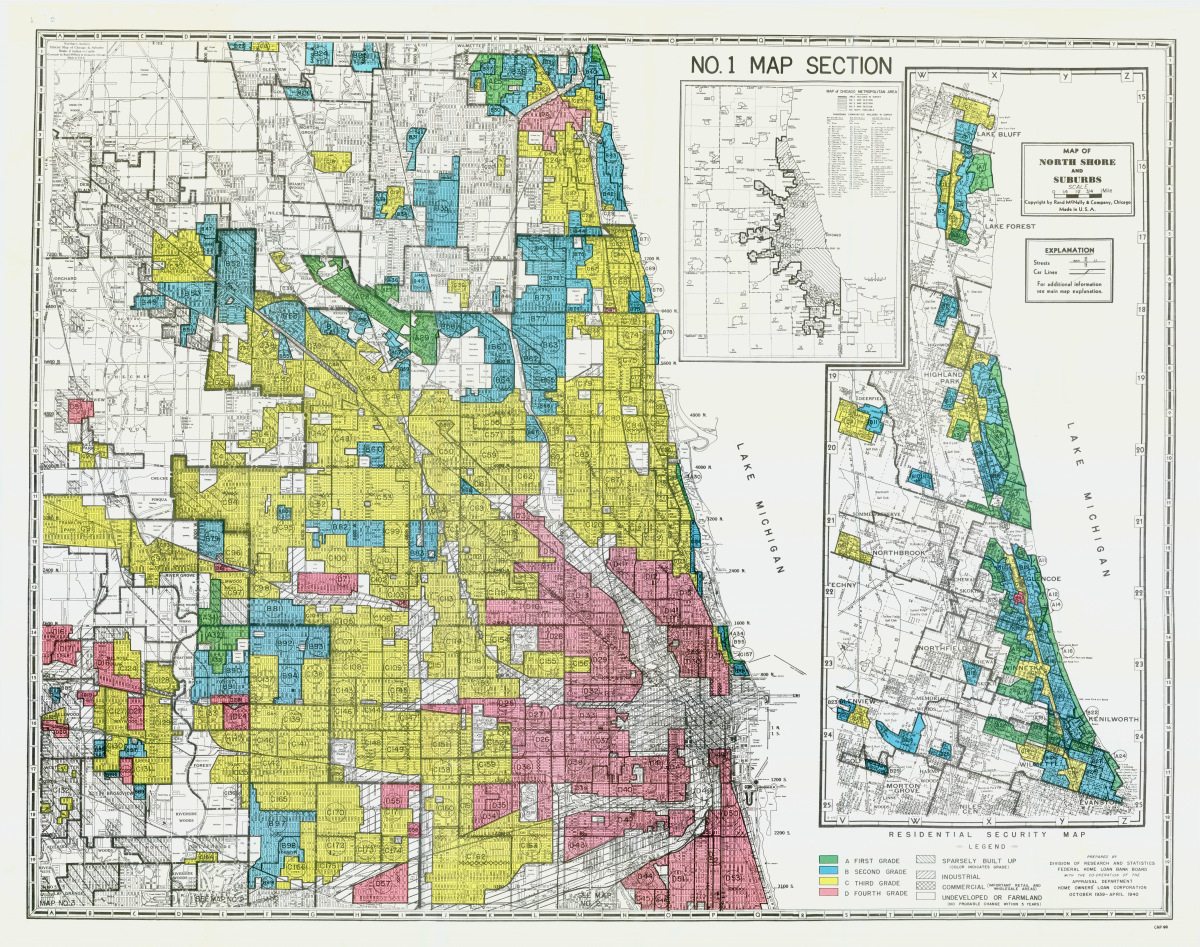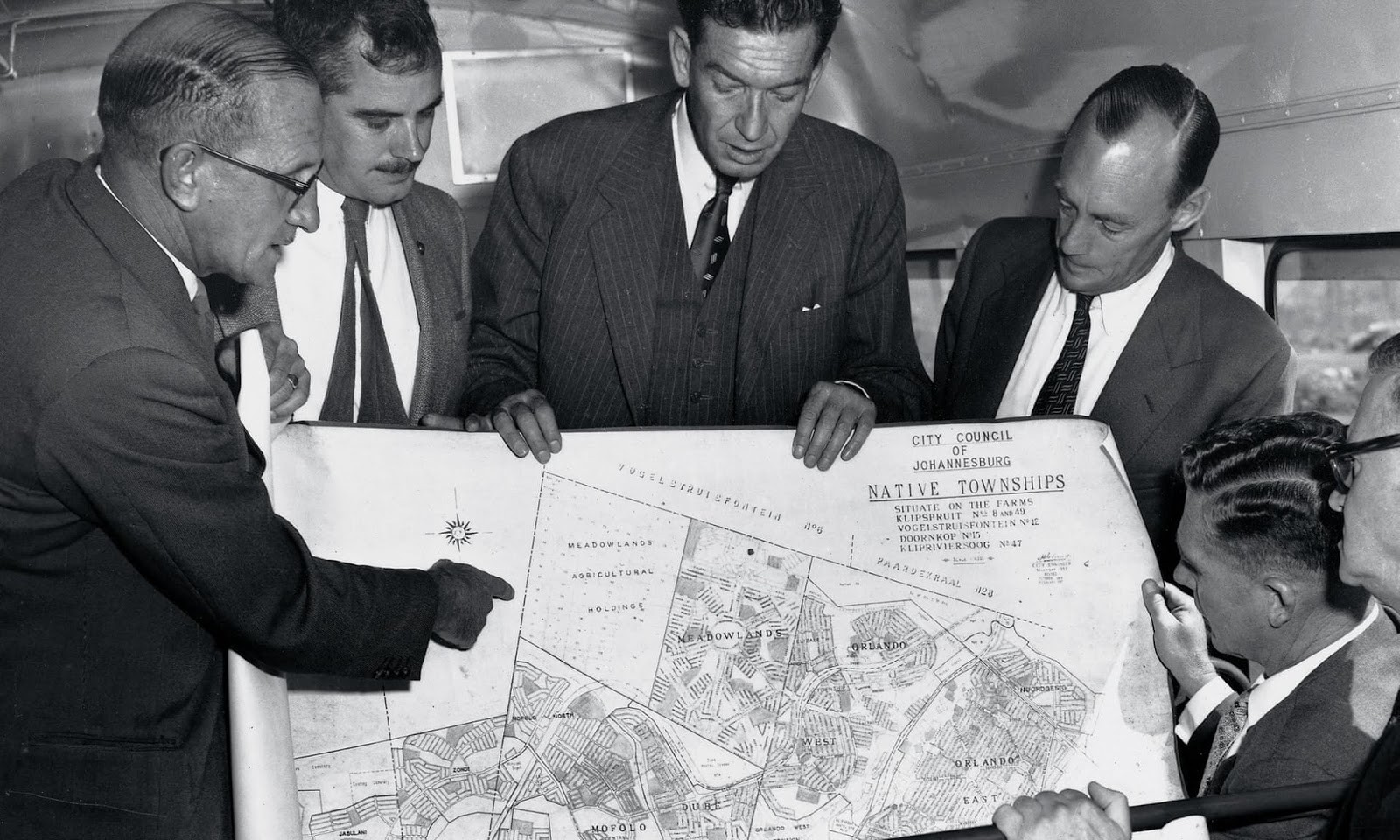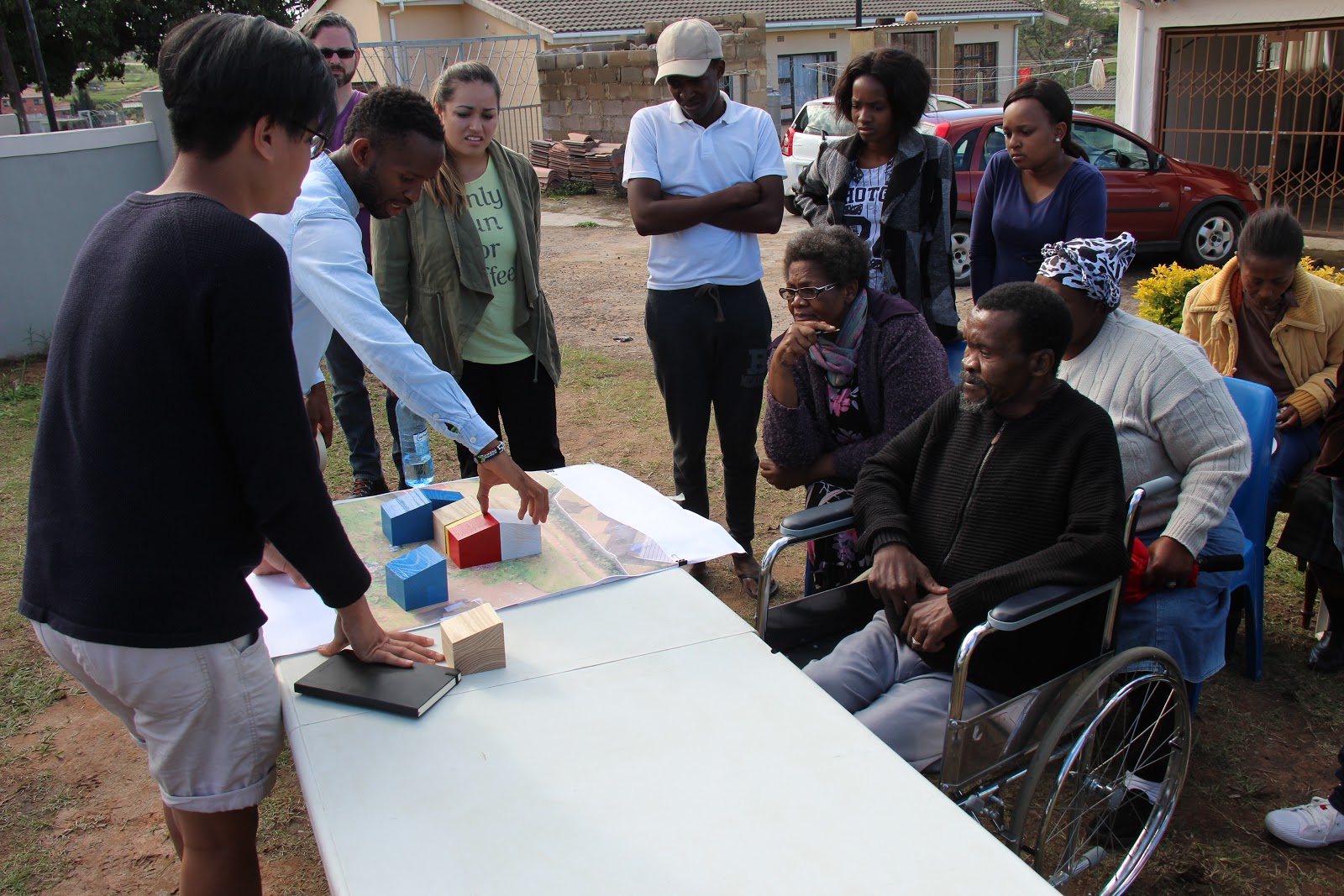
In my second year of architectural studies at a university in Michigan, I was introduced to the “history of architecture.” As a South African, I was particularly excited about this course because the syllabus revealed that it covered African architecture. When the class began, we were briefly taught about ancient Egyptian architecture stretching from the first known architect who designed the pyramid of Saqqara to how great Egyptian ingenuity laid the foundation for the classical architectural language of the ancient Greeks and Romans. Learning that early inventions in African architecture shaped western architecture was revolutionary, but my excitement was short-lived as after only 14 pages into Egyptian architecture, we went on to study 576 pages of western architecture with slivers of Islamic architecture.
As the great architect I.M. Pei best put it, “Life is architecture and architecture is the mirror of life.” Due to my frustrations about the erasure of contributions of other African nations, I spent the next three years of architecture school feeling like architecture wasn’t for people who looked like me because I was learning about and designing buildings that people from my community might never have the privilege to see, let alone inhabit.

Andrews University students in an aparthied-shaped township in Durban, South Africa (2016). Photo Credit: Troy Homenchuk, Andrew Von Maur, Andrews University School of Architecture & Interior Design
In light of the recent protest against police brutality and the continued work of the Black Lives Matter movement, it’s important for us as architects to take responsibility for the fact that design has historically been one of the most powerful tools to perpetuate systemic racism. Architecture is at the root of racial bias against people of color in America and around the world. Although informal discrimination and segregation has always existed in the United States, in 1934, the Federal Housing Administration (FHA) instituted the National Housing Act that began the discriminatory practice called redlining.
Redlining is an unethical practice that places services (financial and otherwise) out of reach for residents of certain areas based on race or ethnicity. It can be seen in the systematic denial of mortgages, insurance, loans, and other financial services based on location (and that area’s default history) rather than an individual’s qualifications and creditworthiness.
This resulted in the dividing of neighborhoods along racial lines, leading banks to start lending to certain neighborhoods and not other neighborhoods based on race. The zoning laws and lending legislation at the time institutionally crippled predominantly African American neighborhoods, all the while lending to white neighborhoods, therefore enabling wealth accumulation.

A 1930s-era redlined map of Chicago; image via Chicago Magazine
The effects of redlining is evident in neighborhoods such as the one that former First Lady of the United States, Michelle Obama, South Side of Chicago, which was stripped from economic opportunities. Property values went down the drain, which led to higher unemployment rates, which is associated with a desperation for survival and higher crime rates. Not every student was as privileged to afford the opportunity to take two buses 12 blocks away to attend Whitney M. Young Magnet school located on the westside of Chicago like the former First Lady was.
Most of the other schools nearer to the neighborhood were under-resourced which led to high dropout rates. This led to high unemployment levels and higher crime rates which the government used to justify higher police presence in the neighborhoods. Unfortunately, in America this directly relates to the higher numbers of deaths of innocent young Black men and women by the hands of the police. Thirty-eight years after Michelle Obama’s high school days, not a lot has changed. According to data from the Chicago Police Department, police are 14 times more likely to use force against young Black men than their white counterparts.
In a similar pattern, halfway across the world, apartheid architecture in South Africa segregated communities along racial lines. Apartheid was a system of institutionalized racial segregation that existed in South Africa between 1948 and 1994. It was a system the minority white folks used to effectively oppress, control, and rule over the majority native Black South Africans.

Officials examine Johannesburg ‘Native Townships’ plan. Apartheid Museum Photograph: Apartheid Museum; image via The Guardian
Like redlining and other government-sanctioned efforts to disenfranchise Black communities, the apartheid regime designed working camps known as “townships.” They used a system called the 40-40-40 rule where they built 40 square meter homes, located 40km away from economic centers. This forced Black people living in these communities to spend 40 percent of their income commuting to work, which rendered them incapable of developing their own homes. The communities were designed to be devoid of social and economic opportunities that crippled the Black communities’ economy.
Although Apartheid ended over two decades ago, township residents still commute 40km to work in town, limiting these residents to the same impoverished conditions into which they were forced during Apartheid. The laws may have changed, but the systems remain. Until we change the way we design and build, we’ll not be able to extinguish the evils of systemic racism.
Wandile explores the science behind apartheid architecture whilst breaking down how it continues to disenfranchise Black townships and shantytown communities 26 years after apartheid was abolished.
Architecture is never neutral; it either heals or hurts. According to a study by the National Community Reinvestment Coalition, three out of four neighborhoods that were redlined on government maps 80 years ago continue to struggle economically. We as architects are not just the designers of glass skyscrapers and infinity pools, but are direct contributors to these injustices. As Winston Churchill best put it, “We shape our buildings; thereafter they shape us.”
Ubuntu Architecture Summer Abroad Program has created a cross-cultural design-build experience for architecture students from around the world. This program is an intercollegiate educational experience in which students learn a community-centered approach to architecture. Students will design and build dignified and culturally-influenced homes for marginalized families in Durban, South Africa, who were affected by apartheid architecture.
The experience will aim to expose students to design problems stemming from systemic racism in a place beyond their own contexts. As apartheid architecture was used to segregate and oppress, community-centered design will focus on bringing people together and enabling equitable opportunities for all. At the end of the program, participants will be equipped with the tools necessary to implement change in their own communities.

Andrews University students working together to finalize the design of the Mtshali family home (2016). Photo Credit: Troy Homenchuk, Andrew Von Maur, Andrews University School of Architecture & Interior Design
As architects, it is important, and in fact we are trained, to take into consideration the entire environment into which we are designing. Examining existing architecture in the area, accessibility, the path of the sun, the approach to the space, and of course, climate and area become second nature to us very quickly. What we need to also make second nature in our designing and planning is examining the history of a place, the people of a place, and the culture of a place–for everyone.
Ubuntu Architecture Summer Abroad Program does exactly that: It trains the next generation of architects to take a broader view of the impact of their work and consider it more than just creating beautiful functional spaces; it trains us to see, hear, think, and feel beyond the aesthetics and into the community in which it resides.
Join us as we use architecture to begin the process of healing communities. Apply here: https://ubuntuasa.org/
Program Location: Durban, South Africa
Program Duration: May 15 – 29, 2021 (not including travel dates)
Eligibility: Third year to graduate-level architecture (and related) students
The post The Architects of Systemic Racism appeared first on Journal.
Original Source: architizer.com
This is the web version of the WSJ’s newsletter on the economy. You can sign up for daily delivery here.
Boom!
U.S. stocks wrapped up their best quarter in more than 20 years, a remarkable rally after the coronavirus pandemic brought business around the world to a virtual standstill. Just three months ago, investors were lamenting the end of the bull market—and the longest economic expansion on record—after major U.S. stock indexes lost about 35% of their value in less than six weeks. The subsequent rebound has been nearly as brisk. Partly thanks to an unprecedented $1.6 trillion stimulus package from the Federal Reserve and Congress and a surge in trading among individual investors, the rally has lifted everything from beaten-down energy stocks to apparel retailers to big technology firms, Michael Wursthorn reports.
The stock market rally stands in sharp contrast to economic output. The second quarter is expected to be the worst post-World War II period on record. There are signs that April was the worst month for the economy and a recovery is already under way. But a resurgence of coronavirus cases could threaten the pace of growth, leaving output and employment well below prepandemic levels for an extended period.
WHAT TO WATCH TODAY
The ADP employment report for June is expected to show a monthly gain of 2.5 million jobs. (8:15 a.m. ET)
IHS Markit’s U.S. manufacturing index for June is expected to tick up to 49.7 from a preliminary reading of 49.6. (9:45 a.m. ET)
The Institute for Supply Management’s manufacturing index for June is expected to rise to 49.5 from 43.1 a month earlier. (10 a.m. ET)
U.S. construction spending for May is expected to rise 0.6% from a month earlier. (10 a.m. ET)
Chicago Fed President Charles Evans speaks at a Chicago community forum at 10 a.m. ET.
The Federal Reserve releases minutes from its June 9-10 meeting at 2 p.m. ET.
TOP STORIES
Down on Main Street
Workplace scheduling-software company Homebase has a warning about Thursday’s U.S. employment report: It might overstate the economic health of Main Street businesses. Yes, employers probably added millions of jobs last month. But the pace of improvement at Homebase’s clients—smaller companies with a heavy dose of leisure and hospitality—was slower in June than in May. Notably, the real-time data shows activity fading in the second half of the month as coronavirus cases piled up in Texas, Arizona and elsewhere. The Labor Department conducted its surveys earlier in June, potentially leaving its report a poor barometer of more recent developments.
Economists are increasingly turning to alternative sources for a read on a fast-changing economy. Drexel University’s Andre Kurmann and colleagues developed a model using Homebase data that is meant to be comparable to the Labor Department’s monthly estimates. “Big takeaway is that recovery of small business employment has almost completely stalled in the last two weeks,” Mr. Kurmann said.
How can the U.S. slow the spread of Covid-19? A growing chorus of Republican officeholders and conservative media figures are calling for people to wear masks. Senate Majority Leader Mitch McConnell, Arizona Gov. Doug Ducey, Georgia Gov. Brian Kemp and Fox host Sean Hannity are among the latest. There is widespread scientific and medical consensus that face masks are a key part of the public policy response for tackling the pandemic, Catherine Lucey reports.
There’s also a robust economic argument. Economists at Goldman Sachs find a national mask mandate would increase usage substantially and cut the daily growth rate of confirmed Covid-19 cases by a full percentage point, to 0.6%. Weighed against other potential actions to reduce the infection rate, Goldman concludes: “A face mask mandate could potentially substitute for lockdowns that would otherwise subtract nearly 5% from GDP.”
Yankee Stay Home
The European Union is starting to open its borders to travelers from as many as 15 countries. The U.S. isn’t one. The decision comes after days of wrangling between the bloc’s member states, which were divided over the economic benefits of opening up ahead of the summer tourist season amid concerns about a second wave of the coronavirus, Laurence Norman reports.
U.S. consumers weren’t going anyway: In June, the share of households planning to vacation in a foreign country fell to the lowest level since 1986, according to a Conference Board survey.
One consequence of falling air traffic: Airbus said it would cut 15,000 jobs across its commercial aircraft division, citing what it expects to be the Covid-19 pandemic’s yearslong impact on the aviation sector. The majority of the cuts, which amount to about 11% of the company’s total workforce, will be in France and Germany. Airbus doesn’t expect a recovery in air traffic to prepandemic levels before 2023, Benjamin Katz reports.
Pandemic Demand
FedEx said Christmas-like levels of online shopping boosted its business, and it is seeing tentative signs that the global economy is recovering from the coronavirus pandemic. The company said that 72% of shipments in the U.S. went to residences in the latest quarter, compared with 56% a year ago, Paul Ziobro and Allison Prang report.
Conagra Brands said it is investing in more manufacturing capacity as demand for its packaged foods remains strong this summer. The maker of Hunt’s tomatoes, Healthy Choice meals and Birds Eye frozen vegetables said its comparable sales jumped 22% in the quarter that ended May 31 and have continued to increase since then. Retailers and food makers want to be prepared for a surge in grocery shopping, which is likely if a second wave of Covid-19 cases occurs as forecast, Annie Gasparro reports.
Gold prices extended a recent rally Tuesday with uncertainty about the economic recovery and ultralow interest rates lifting demand for the haven metal. Prices ended the second quarter up 13%, their biggest quarterly advance since early in 2016. Tuesday’s close marked gold’s first close above $1,800 since September 2011, and prices are within about 5% of their all-time high of $1,891.90 from August of that year, Amrith Ramkumar reports.
WHAT ELSE WE’RE READING
The Covid-19 recession isn’t like other downturns. “Traditional macroeconomic tools–stimulating aggregate demand or providing liquidity to businesses–may have diminished capacity to restore employment when consumer spending is constrained by health concerns. During a pandemic, it may be more fruitful to mitigate economic hardship through social insurance. More broadly, this analysis illustrates how real-time economic tracking using private sector data can help rapidly identify the origins of economic crises and facilitate ongoing evaluation of policy impacts,” Harvard’s Raj Chetty and colleagues write in a new working paper.
SIGN UP FOR OUR CALENDAR
Real Time Economics has launched a downloadable calendar with concise previews forecasts and analysis of major U.S. data releases. To add to your calendar please click here.
Original Source: blogs.wsj.com